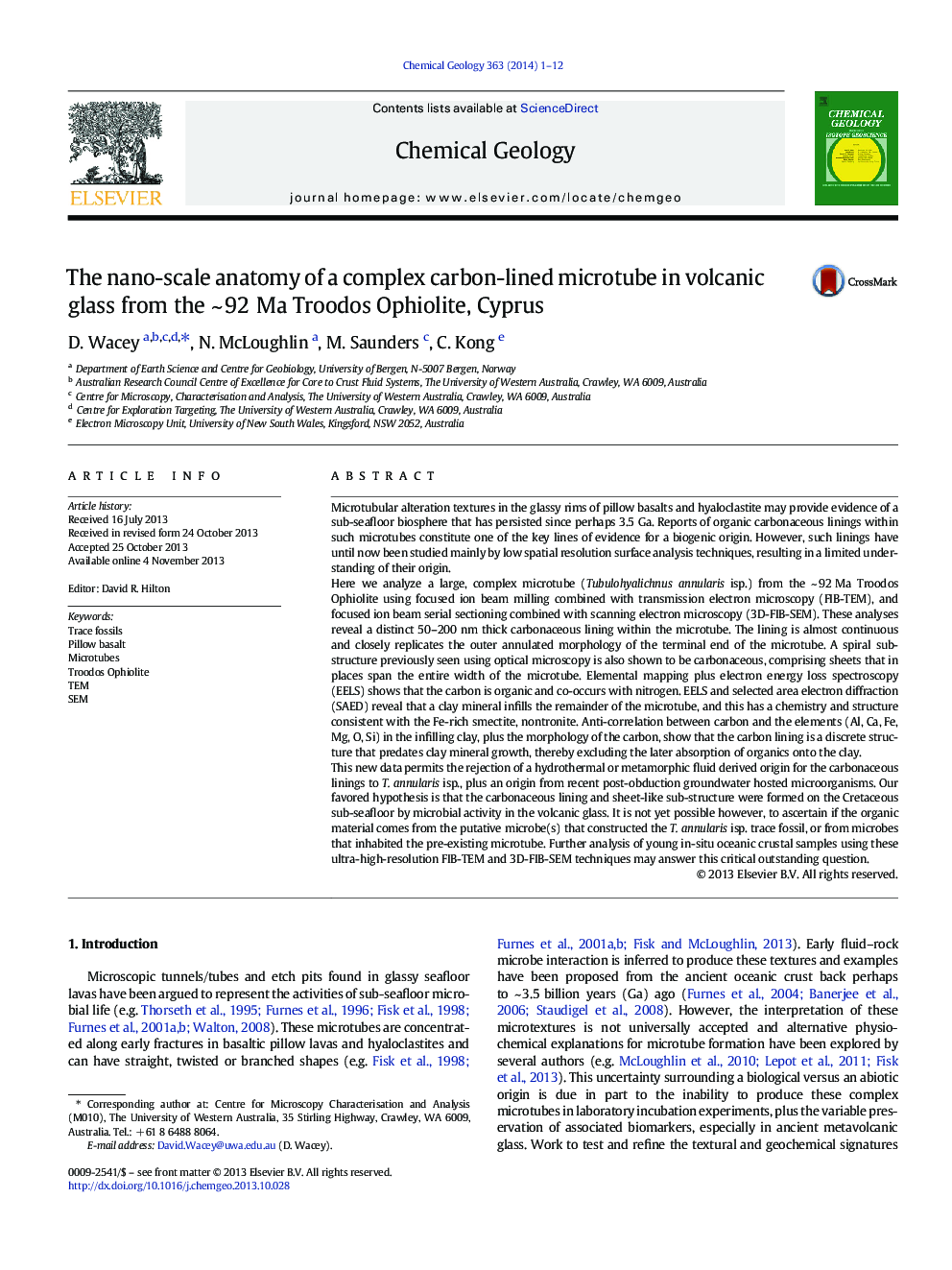| کد مقاله | کد نشریه | سال انتشار | مقاله انگلیسی | نسخه تمام متن |
|---|---|---|---|---|
| 6436675 | 1637607 | 2014 | 12 صفحه PDF | دانلود رایگان |

- We performed 3D analysis and reconstruction of Tubulohyalichnus annularis.
- We found 50-200Â nm thick organic carbon linings in this 92Â Ma trace fossil.
- We provide proof that organic carbon linings occur in microtubes in volcanic glass.
- Carbon linings are a viable biosignature for alteration textures in volcanic glass.
- FIB-TEM and FIB-SEM are highly suited to investigate microtubes in the rock record.
Microtubular alteration textures in the glassy rims of pillow basalts and hyaloclastite may provide evidence of a sub-seafloor biosphere that has persisted since perhaps 3.5Â Ga. Reports of organic carbonaceous linings within such microtubes constitute one of the key lines of evidence for a biogenic origin. However, such linings have until now been studied mainly by low spatial resolution surface analysis techniques, resulting in a limited understanding of their origin.Here we analyze a large, complex microtube (Tubulohyalichnus annularis isp.) from the ~Â 92Â Ma Troodos Ophiolite using focused ion beam milling combined with transmission electron microscopy (FIB-TEM), and focused ion beam serial sectioning combined with scanning electron microscopy (3D-FIB-SEM). These analyses reveal a distinct 50-200Â nm thick carbonaceous lining within the microtube. The lining is almost continuous and closely replicates the outer annulated morphology of the terminal end of the microtube. A spiral sub-structure previously seen using optical microscopy is also shown to be carbonaceous, comprising sheets that in places span the entire width of the microtube. Elemental mapping plus electron energy loss spectroscopy (EELS) shows that the carbon is organic and co-occurs with nitrogen. EELS and selected area electron diffraction (SAED) reveal that a clay mineral infills the remainder of the microtube, and this has a chemistry and structure consistent with the Fe-rich smectite, nontronite. Anti-correlation between carbon and the elements (Al, Ca, Fe, Mg, O, Si) in the infilling clay, plus the morphology of the carbon, show that the carbon lining is a discrete structure that predates clay mineral growth, thereby excluding the later absorption of organics onto the clay.This new data permits the rejection of a hydrothermal or metamorphic fluid derived origin for the carbonaceous linings to T. annularis isp., plus an origin from recent post-obduction groundwater hosted microorganisms. Our favored hypothesis is that the carbonaceous lining and sheet-like sub-structure were formed on the Cretaceous sub-seafloor by microbial activity in the volcanic glass. It is not yet possible however, to ascertain if the organic material comes from the putative microbe(s) that constructed the T. annularis isp. trace fossil, or from microbes that inhabited the pre-existing microtube. Further analysis of young in-situ oceanic crustal samples using these ultra-high-resolution FIB-TEM and 3D-FIB-SEM techniques may answer this critical outstanding question.
Journal: Chemical Geology - Volume 363, 10 January 2014, Pages 1-12